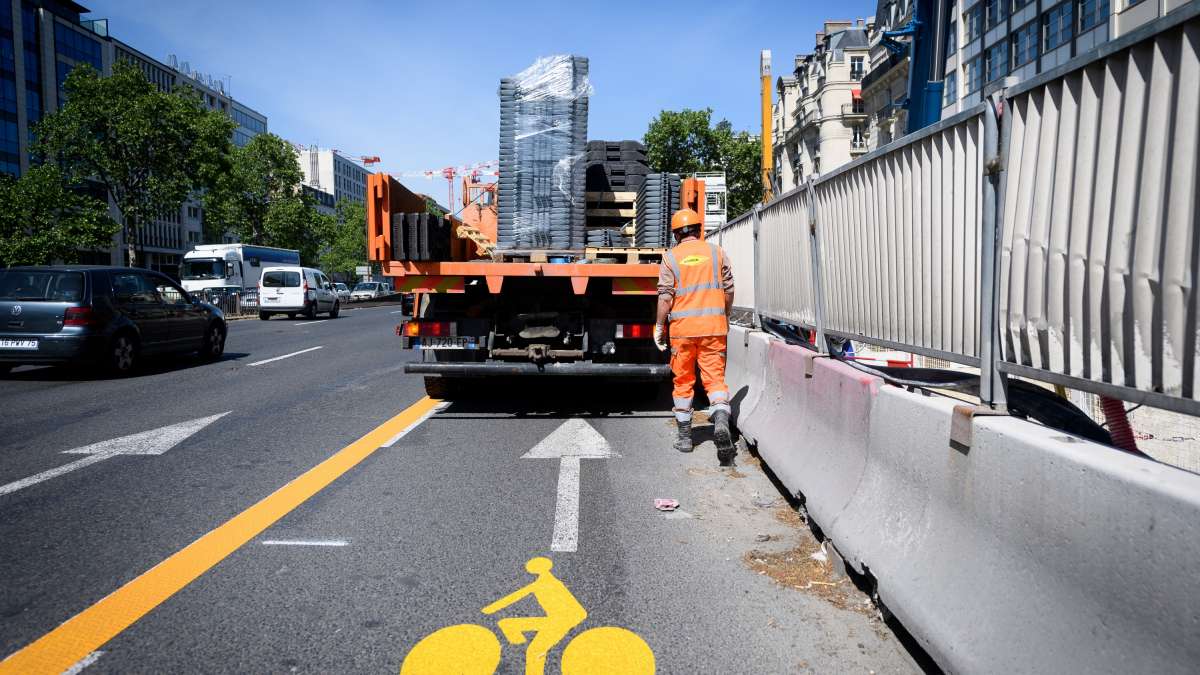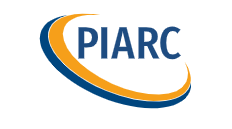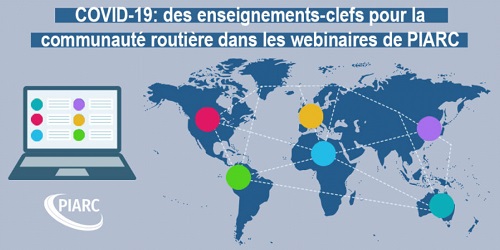This article is part of the folder : Impact de la crise Covid-19 dans le domaine routier: les webinaires de l'Association mondiale de la route
See the 2 news related to this folder
 Since it began at the end of 2019, the coronavirus pandemic has caused major disruptions in the lives of people and organisations, and in the provision of services worldwide.
Since it began at the end of 2019, the coronavirus pandemic has caused major disruptions in the lives of people and organisations, and in the provision of services worldwide.
The road sector severely impacted by the health crisis
As public sector bodies working in many different sectors, members of PIARC (Permanent International Association of Road Congresses) are also affected (employee safety, continuity of activity, transport, commercial relations, partnership relations, etc.) and are taking various steps to deal with the situation.
PIARC organises on-line discussions every week in English, Spanish and French on the response to the COVID-19 crisis. They are open to experts designated by their first national PIARC delegate, and to members of PIARC’s technical committees and working groups.
The aim of these sessions is to rapidly share knowledge and current best practice between PIARC members .
Two reports "COVID-19: key lessons for the road community” were published in French, following the first webinars on 21 April and 18 May.

PIARC’s objective by organising these sessions is to propose and implement short-term actions to:
-
support PIARC members and transport professionals;
-
track the evolution of COVID-19 over time, and give advice on the measures to be taken by PIARC and other bodies during the crisis and the recovery;
-
give advice on the medium and long-term consequences of COVID-19 for the road and transport sector, and about how to assess and tackle these consequences.
Cerema’s experts will contribute to this work through their participation in some of PIARC’s technical committees, looking to enable transport and travel networks to adapt and be resilient, thanks to a new way of living and travelling.
The participants in this webinar on 7 July 2020 were:
-
Claude Van Rooten, President of PIARC
-
Patrick Malléjacq, Secretary General of PIARC
-
Anne-Marie Leclerc, Canada Quebec - Assistant Deputy Minister for engineering and infrastructure, Quebec Ministry of Transport, First delegate of Canada-Québec, Honorary President of PIARC
-
Emmanuelle Frénéat, France - Deputy Chief Executive, Egis Road Operation
-
Mohamed Laye, Sénégal - Head of Major Road Works Division, AGEROUTE
-
Sandrine Rousic and Pascal Rossigny, France – Cerema, Secretaries respectively of Committee TC 2.1 - Mobility in urban environments and TC 3.3 - Road asset management.
Current situation in France and outlook by Cerema
Two Cerema specialists gave a presentation:
Impact of the COVID-19 pandemic on activities in France

Pascal Rossigny, Head of the “Asset management” sector at Cerema Transport infrastructures and materials, gave a presentation on the impact the Covid-19 pandemic has had on public works activities where more than 80% of sites were shut down during lockdown, and particularly on road maintenance in France, as well as the health measures taken to enable these activities to resume.
The “Guide to health security for continuity of construction activities during the Covid-19 coronavirus epidemic” was published by OPPBTP (Construction and public works professional prevention body) in early April, just two weeks after the lockdown began. It contains advice sheets to inform employees and was regularly updated as the lockdown was eased. The recommendations became applicable when the lockdown began and are still in force. Failure to do so may cause work sites to be closed down.
A “Heatwave” information sheet has recently been added at the start of this summer in order to enable staff to work during very hot weather and remain protected against Covid-19 on work sites.
Each contractor and each person working on the sites (particularly Cerema which is called upon to provide its technical expertise) has integrated the measures in this guide into their own operating procedures.
Activities on the work sites have resumed, but the industry in France fears that the turnover in the roadworks sector will be down by roughly 18% for the year 2020.
Presentations were also given concerning:
-
Provisions put in place to maintain supplies to the population and to work sites, in particular by ensuring heavy goods vehicle drivers receive essential services.
-
Measures to help businesses get through this crisis, withstand it and fully recover after this particularly violent economic shock.
Different mobility following COVID-19 (active modes and impact on traffic)

Sandrine Rousic, the multi-modal design project manager at Cerema Méditerranée, gave a presentation on public policies to support changes in mobility in France, the consequences and opportunities the pandemic brings for all mobility modes.
After launching the 1st government plan in favour of bicycles and active mobilities in 2018 and reinforcing it with the Framework Law on Mobilities (2019), the aim of the French government is to multiply by three the use of bicycles, to reach 9% of journeys by 2024. In France, the lockdown measures caused an exceptional drop in all journeys, and desertion of roads by motor vehicles, leaving room for opportunities to change the balance in the use of public space.
At the end of April 2020 the Ministry for ecological transition in solidarity announced a plan to which 20 million euros was allocated to facilitate the use of bicycles at the end of the lockdown, in particular to avoid a massive transfer from public transport to cars.
During the pandemic Cerema has published two quick guides to temporary adaptations, and created a series of webinars to support the enthusiasm of local authorities in implementing adaptations to facilitate active modes of transport.
These guides present 7 levers which facilitate journeys for cyclists by adapting road networks.
The increase in use of bicycles has many positive impacts: on health (it also allows for physical distancing during this health crisis), on attractiveness of city centre shops, on the environment, etc. Over the last few years a strong increase has been observed in the use of Electric Power-Assisted Bicycles (EPAB) with modal transfer from cars.

Temporary adaptations provide an opportunity to test changes in road use quickly, with light, reversible or adaptable systems, and to change mental representations of how roads are used.
Although these temporary adaptations for cyclists and pedestrians are not destined to become a permanent feature, they could prefigure future transformations of public spaces.
In parallel, Cerema has deployed an on-line platform to track changes in French road traffic and measure the impact the different health-related measures have on traffic.
Although road traffic has virtually returned to normal, there remains a strong desire to increase the modal share of bicycles, both in urban areas and in the countryside. As temporary adaptations become permanent and the bicycle plan to develop continuous cycle tracks outside urban areas comes into effect, they are likely to bring about major transformations in the longer term.
In the folder : Impact de la crise Covid-19 dans le domaine routier: les webinaires de l'Association mondiale de la route

